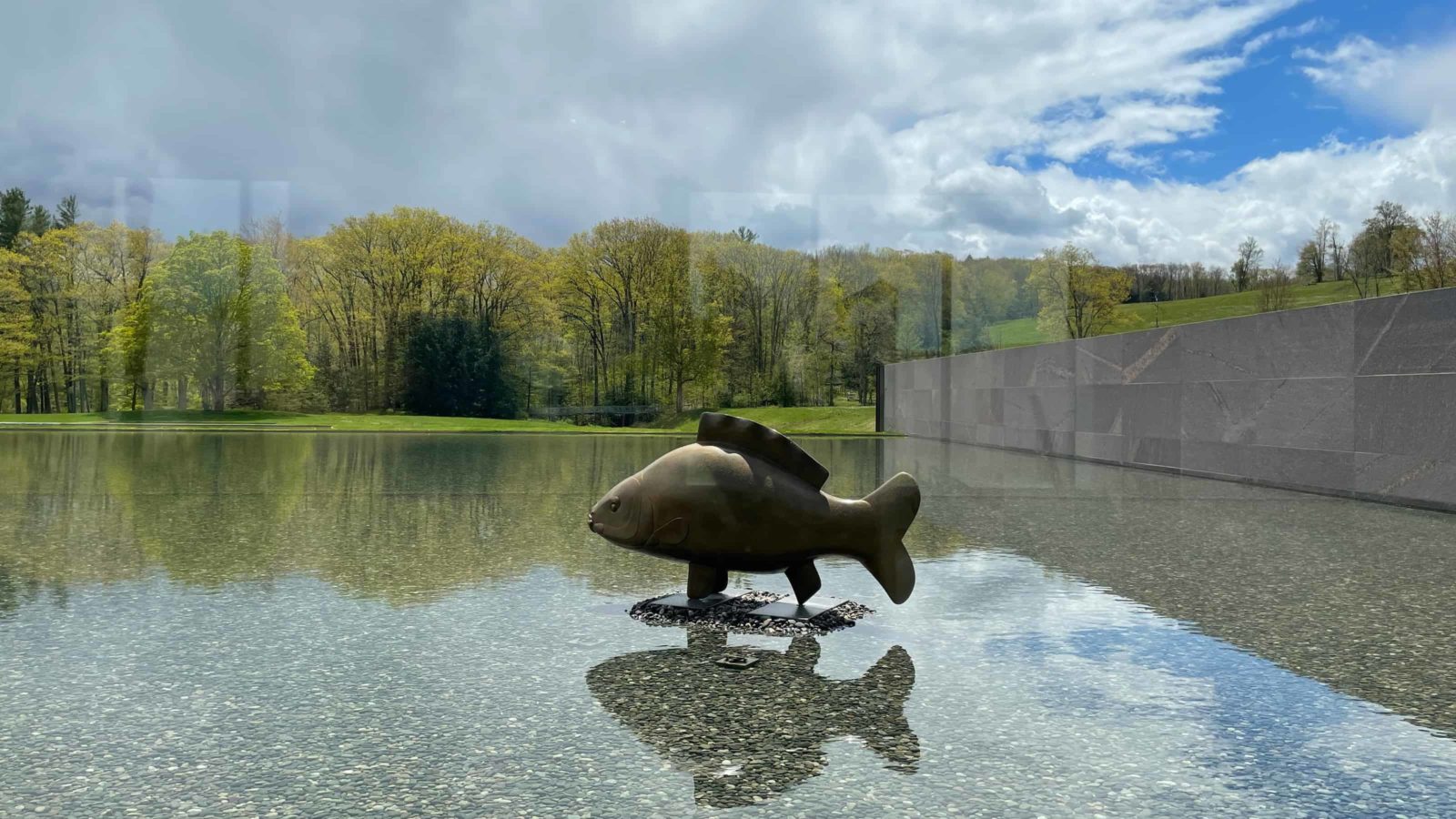The old stone buildings once held an 18th century dairy farm, before the workshops grew into two artist studios side by side, and the land around them grew into gardens. Copper and bronze shapes appeared on the paths and around corners, like the veined rippling cup of a giant cabbage leaf.
The sculptors Claude and François-Xavier Lalanne lived and worked here, in Ury, south of Paris. Married 40 years (until François-Xavier’s death in 2008) and artists together even earlier, Les Lalanne are known around the world for their whimsical organic lifeforms.
Kathleen Morris, director of collections and exhibitions and curator of decorative arts at the Clark Art Institute, came here three years ago with director Olivier Meslay and curator Esther Bell, to talk with Claude Lalanne in the last year of her life.
Morris had not known what to expect, and the place kept surprising her.
“Everyone described it as a life-changing experience to me,” she said, sitting in her own garden on a spring day — and when she walked the paths in Claude’s gardens in Ury she felt a magic hard to put into words. It moved her to sit in the living room full of their art and the art of their friends, and feel the comfortable, welcoming room around her. Claude invited her to take a chair, and she sat next to silvery fish-shaped pillows from François-Xavier’s Sardine Bed.
Meslay has long admired Les Lalanne, and Morris came with him to talk with Claude about showing her work and her husband’s, and to ask her blessing. This summer, the Clark will show Les Lalanne in Nature Transformed — becoming the first American museum to show their work in 40 years, though their sculptures have appeared in exhibits and collections from the Centre Pompidou to Windsor Castle.
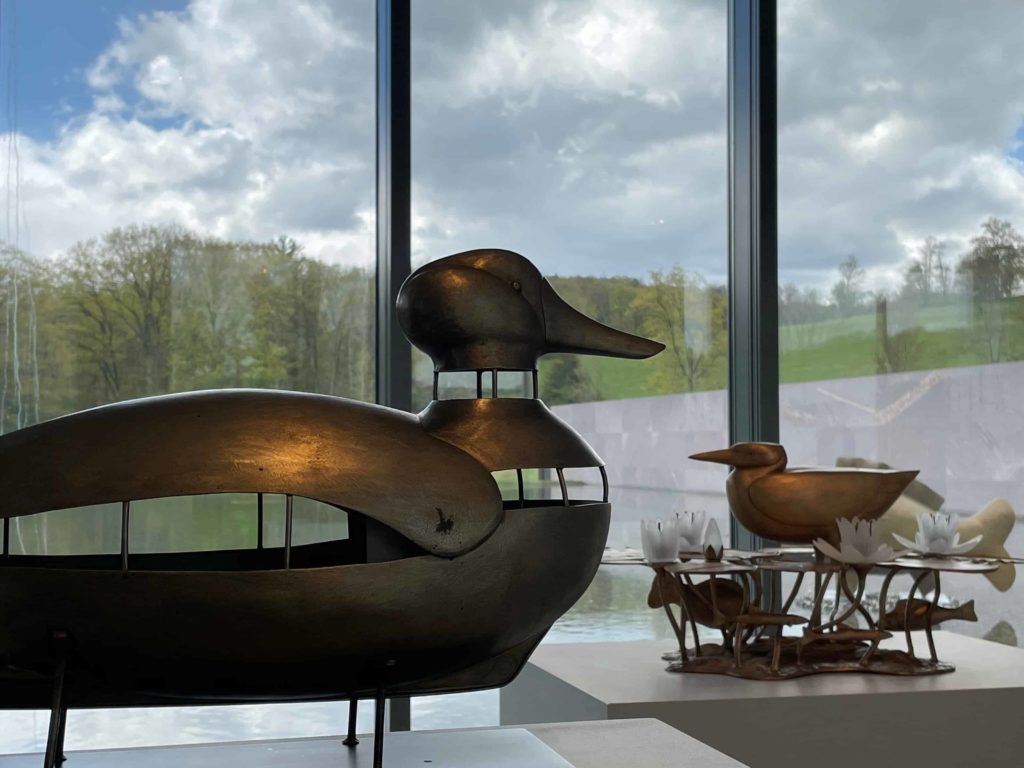
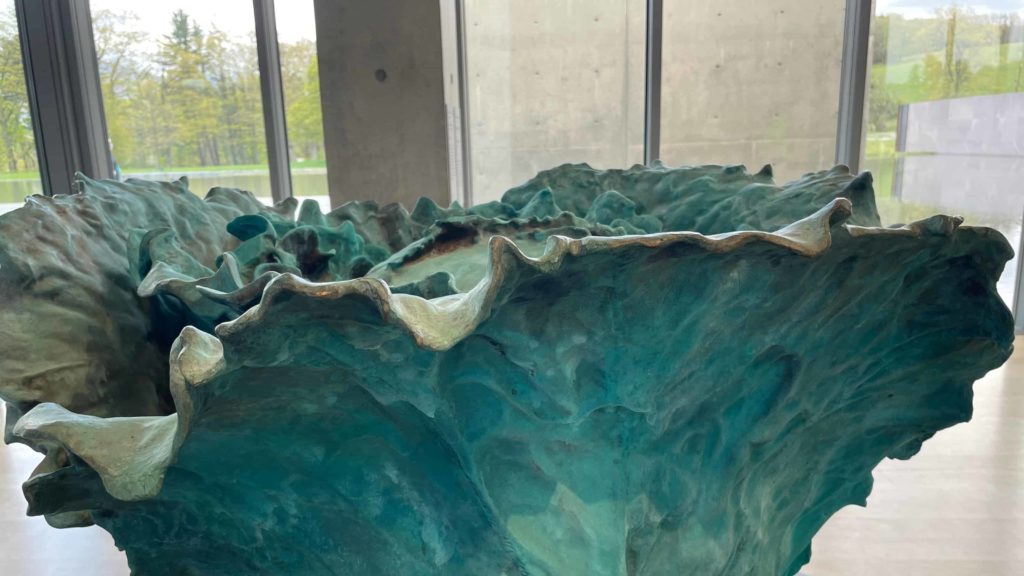


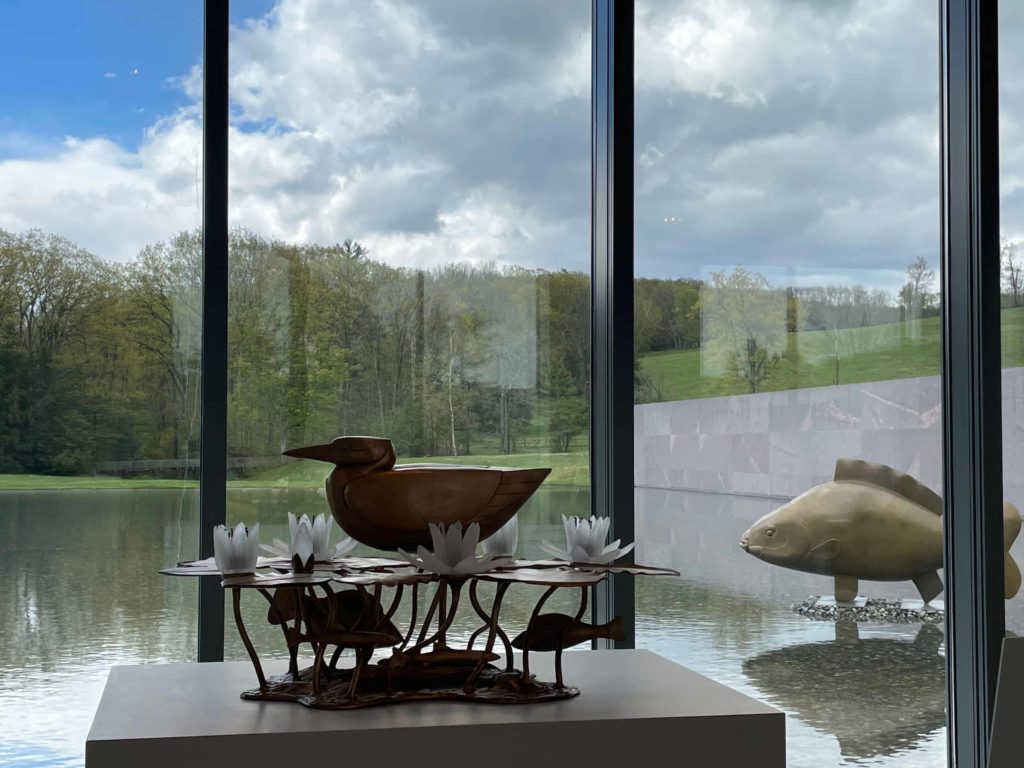
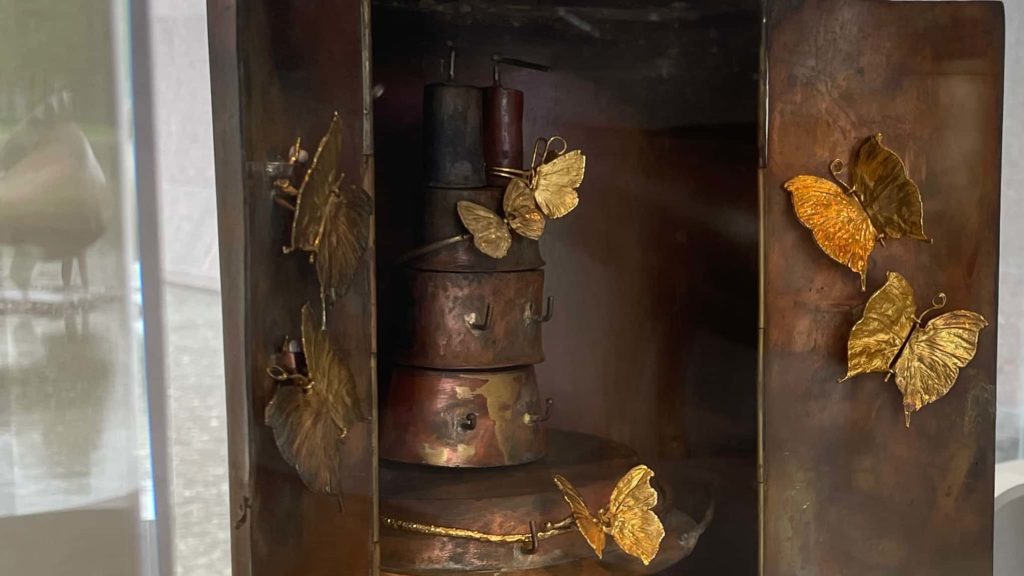
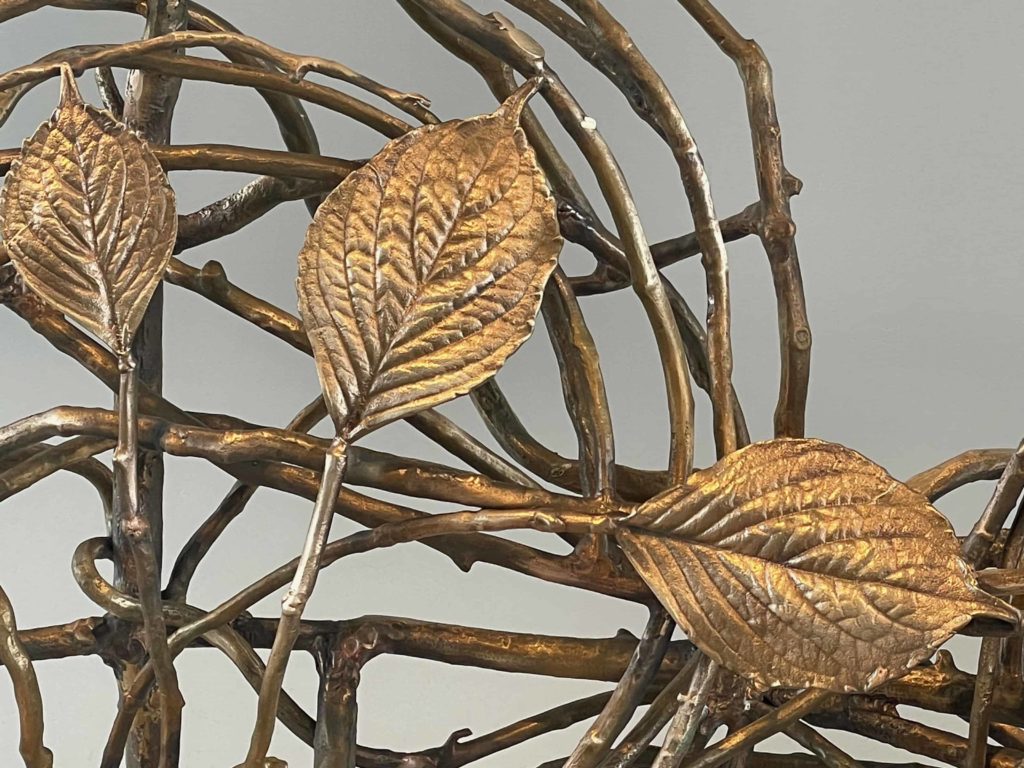
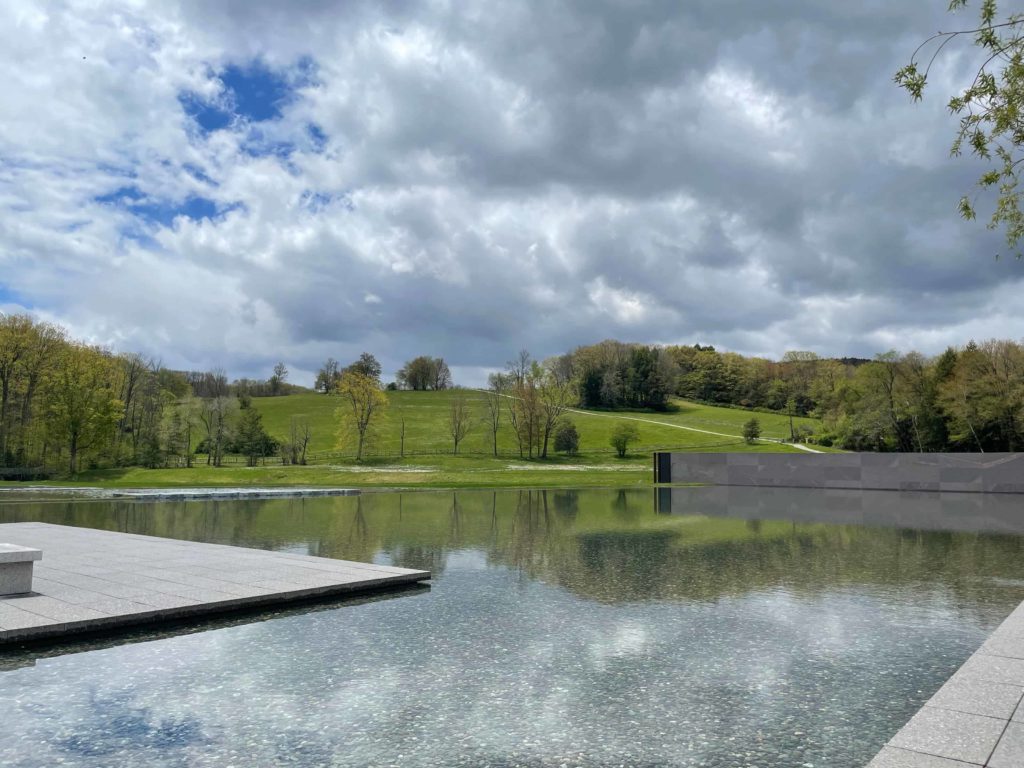

The Clark meant the show to open a year ago, Morris said, until the pandemic intervened, and it is open now in the Conforti pavillion with its wall of windows, and outside near the reflecting pools. Bronze ginko leaves fan into a bench and an enormous carp hovers over the water.
A rhinoceros transmogrifies into a writing desk, and dragonfly wings, lady’s slippers and nautilus shells curl into the bowls of spoons.
Les Lalanne first made works like these in Paris in the late 1950s. They met in Montparnasse, in a community of artists in the Impasse Ronsin, a cul-de-sac of studios and a creative center since the first world war.
Claude and François-Xavier lived as young artists in this experimental crowd, in and out of each others’ studios and cheap, barely heated rooms, sharing equipment and ideas.
On a spring night in the early part of the century, Constantin Brâncuși would have been here shaping the long tapered forms he called the shape of the flight of birds, and Mina Loy writing a poem to describe them, “bare as the brow of Osiris,” and Isamu Noguchi studying stone sculpture.
Later, after World War II, Niki de Saint-Phalle was painting with a rifle, and Jean Tinguely was building scrap metal machines and asymmetrical fountains. Metal sculptor James Metcalf pooled resources to help Claude set up her metalworking and wrote an essay in the catalog for Les Lalanne’s first show together in 1964.
Among these artists, emerging and well-known, Claude and François-Xavier were making a living by creating work for stage productions and shop windows. In the post-war 1950s and 1960s, in the era of surrealism and abstract expressionism, they were exploring the natural and the real, even when they saw it slant.
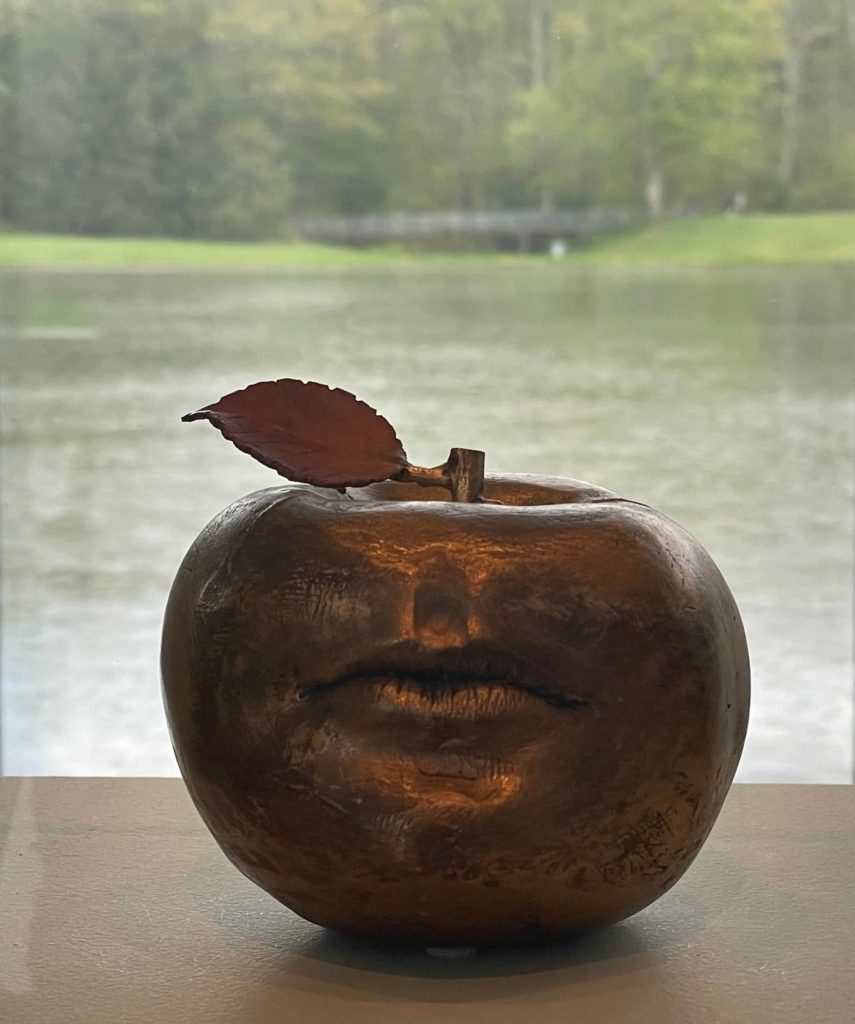
Claude Lalanne's whimsical apple appears in Nature Transformed at the Clark Art Institute.
They did not follow artistic trends, Morris said. They were not part of any one school of art. They had many friends among the surrealist artists, but they would not have called themselves surrealists.
“They forged their own path,” she said.
That may be, she believes, why they so rarely appear in museums in the U.S., because curators question how to describe them them — sculptors, designers, decorative artists?
She sees them as sculptors, she said, and she also believes that it doesn’t matter. They said the same. They often spoke in frustration about people who focused on classifications and not on the work itself.
She has created a retrospective to span their careers, from early work to their last years, with an equal number of works from each artist, and at least one collaboration. They always exhibited under their joined name, she said, from their first show, and in their own shows they never identified who had created which work, and yet they rarely worked together on one piece.
They had different practices, she said.
François-Xavier would start with meticulous drawings, like an engineer, and create massive creatures who could look like one thing and transform into another. A life-sized 600-pound bronze rhinoceros held a hidden door that folded down into a writing surface.
He would create five rhino sculptures in time, she said. They held a fascination for him, one he shared with surrealist Salvador Dali and the absurdist playwright Eugene Ionesco, a sense of mystery and power.
Over the years, he would create fewer hidden doors and uses but continue to explore a blend of natural and abstract, like his massive smooth sardines, or owls with rounded heads and large eyes reminiscent of Brâncuși’s human forms.
Claude works with detail and improvisation and the kind of skill that makes a triple flip look easy. In her studio she would have metal shapes everywhere, on shelves and tables. she could take up one element from a shelf and combine it with another, Morris said, experimenting, feeling for a moment when it felt right. She was meticulous, and when she was finished her works would have a sense of randomness, as though they just fell together in a beautiful tangle.
Over time, her works grew in scale. She began with life-sized renderings, Morris explained, because she made them from real leaves or shells or other forms, transmogrified.
She would copper plate them, essentially dissolving copper (in a galvanic bath with an electric current) and coating a leaf or a flower with it. The leaf would be dislimned and leave the metal shape behind.
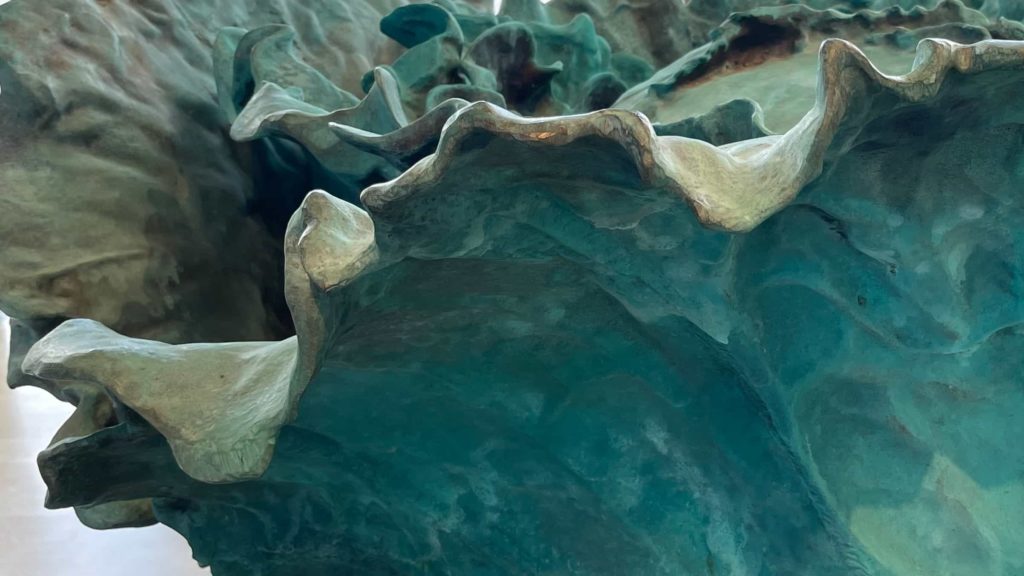
Claude Lalanne's colossal cabbage glimmers in Nature Transformed at the Clark Art Institute.
Over time, she began to translate smaller works into larger forms, until her cabbage leaves became almost her own height. She cast them in metal and welded them together, set on absurd chicken’s feet.
One of the great strengths of Les Lalanne’s work, Morris said, is that they made it by hand, themselves. Claude set up her baths and laid on her copper plating herself. Even if they eventually sent some of the larger pieces to a foundry to be cast, they put the pieces together themselves and created surfaces and patinas.
At 92, Claude still worked in her studio, every day to the end.
And though she and her husband worked in different ways, Morris found a similar spirit between them. She feels no sarcasm or alienation in their work, she said, no satisfaction at anyone else’s expense, but an openness and sense of play.
“There’s something so joyful about their work, and so magical at the same time,” she said. “That’s something I love about their work, how much joy is invested in it. It’s a celebration of life, natural and human and animal … it’s hard to look at their work without seeing and feeling your spirits lift.”
And at the end of a pandemic, she thinks people will have time for humor and hope.

Cloud and sun chase each other over Stone Hill on a spring day.

